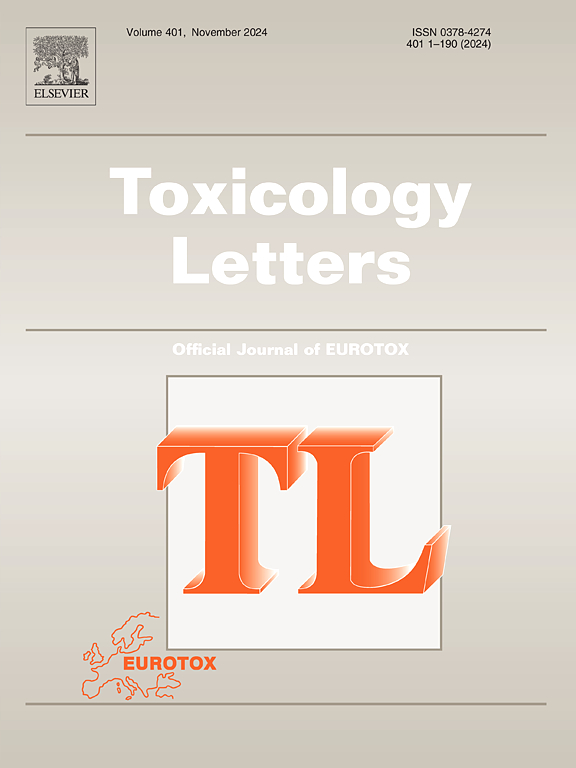Self-poisoning by sodium nitrite ingestion: Investigating toxicological mechanisms in vitro
IF 2.9
3区 医学
Q2 TOXICOLOGY
引用次数: 0
Abstract
Nitrite ingestion has recently emerged as a suicidal method. The mechanisms of toxicity involved in fatal intoxications are associated with the disturbance of physiological processes, mainly through the massive induction of methemoglobinemia. However, there is limited information on the whole spectrum of effects following acute poisonings, requiring additional investigation. An in vitro study of sodium nitrite/nitrate toxicity (25–400 mM, 4 h) was conducted to assess the direct effect on cell models (H9c2, Caco-2 and SH-SY5Y). Cell viability assays (neutral red uptake and MTT reduction) were performed to obtain full concentration-toxicity curves. In vitro digestion assays were also conducted to study potential transformations of nitrite (2.6 g) into other chemical species within the gastrointestinal tract. Additionally, the blood levels of sodium nitrite/nitrate (1–500 mM, 20 min) associated with the increase of methemoglobin in human blood samples were evaluated using a spectrophotometric technique. Cell viability assays showed no significant toxicity of sodium nitrite or nitrate for any of the tested cell lines at biologically relevant concentrations, even those found in intoxication cases. Digestion simulation tests revealed that nitrite is likely to convert into other nitrogen species, especially in the gastric environment. In vitro exposure of blood to sodium nitrite resulted in the production of methemoglobin, whereas nitrate did not exhibit the same effect. The data suggest that methemoglobinemia is the primary mechanism of toxicity in nitrite poisonings. Nevertheless, further research is needed to better understand the progression of these episodes, which could help refine treatment strategies.
摄入亚硝酸钠引起的自身中毒:研究体外毒理学机制。
摄入亚硝酸盐最近成为一种自杀方法。致命中毒的毒性机制与生理过程的紊乱有关,主要是通过大量诱导高铁血红蛋白血症。然而,关于急性中毒后整个影响范围的信息有限,需要进一步调查。通过体外亚硝酸钠/硝酸钠(25-400mM, 4h)毒性研究,评估其对细胞模型(H9c2、Caco-2和SH-SY5Y)的直接影响。进行细胞活力测定(中性红摄取和MTT还原)以获得完整的浓度-毒性曲线。还进行了体外消化试验,以研究亚硝酸盐(2.6g)在胃肠道内转化为其他化学物质的可能性。此外,使用分光光度法评估血液中亚硝酸钠/硝酸钠水平(1-500mM, 20min)与人体血液样品中高铁血红蛋白增加的关系。细胞活力测定显示,在生物学相关浓度下,亚硝酸钠或硝酸钠对任何受试细胞系都没有显著毒性,即使是在中毒病例中发现的浓度。消化模拟试验表明,亚硝酸盐很可能转化为其他氮种,特别是在胃环境中。在体外实验中,血液暴露于亚硝酸钠会导致高铁血红蛋白的产生,而硝酸盐没有表现出同样的效果。这些数据表明高铁血红蛋白血症是亚硝酸盐中毒的主要毒性机制。然而,需要进一步的研究来更好地了解这些发作的进展,这可能有助于改进治疗策略。
本文章由计算机程序翻译,如有差异,请以英文原文为准。
求助全文
约1分钟内获得全文
求助全文
来源期刊

Toxicology letters
医学-毒理学
CiteScore
7.10
自引率
2.90%
发文量
897
审稿时长
33 days
期刊介绍:
An international journal for the rapid publication of novel reports on a range of aspects of toxicology, especially mechanisms of toxicity.
 求助内容:
求助内容: 应助结果提醒方式:
应助结果提醒方式:


